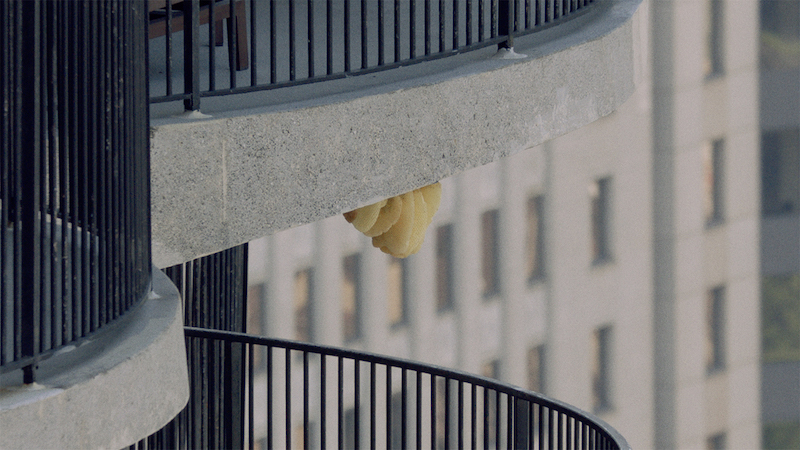An unnerving fictional reality
I started this piece when the destruction of the infamous ‘Vele’ housing complex in Scampia, Naples (have you watched Gomorrah?) was all over the news. I’m finishing it in the shadow of reports on the spreading of COVID-19 virus in northern Italy: TV, phone, computer screens constantly alight around the house. Perfect timing to ponder Andrew Norman Wilson’s Lavender Town Syndrome, where collective imagination, utopian architecture, conspiracy theories, mortality, emotional overload and extreme optical strain are gathered together to question our perception of what the artist calls ‘truthiness’.
Presented at Ordet, a newly opened space in Milan’s Porta Romana area, the American artist’s exhibition revolves around a new multichannel video: Z = |Z/Z●Z-1 mod 2|-1 (all works 2019), projected in slightly different versions on three screens installed in the main space. Each variant begins with the same sequence of extended zooming shots (filmed with telephoto lenses usually employed for wildlife documentaries) of a single balcony of the iconic Marina City complex in Chicago, designed during the 1960s by architect Bertrand Goldberg – a “concrete lotus flower” in “the most square city on earth”, as Wilson remarks in voiceover. While the vantage point and visual trajectory remain claustrophobically identical, with a touch of Rear Window-ish voyeurism, the subjects on the balcony change: a bees’ nest, large dried lotus seed pods, corncobs inside a BBQ, a sculpture, two towers made of biscuits recalling the shape of Marina City, twin kids wearing identical Star Wars jerseys and finally a yellow papier-mâché Pikachu, modelled after a meme found on Reddit.
Their appearance accompanies a convoluted voiced-over story of a small group of artists who drop out of the art system to instead embrace socially engaged design and deal with parenting dilemmas. From here on, the versions of the video diverge, to include diverse imaging technologies, such as photorealistic raytraced animations (based on materials actually existing in nature), and lysergic, trancelike 3D fractal ‘ray-marching’ animations, developed by the computer engineer Code Parade. These visions extend from macro to micro, to infinitesimal, to out of focus and back again, in endless chains of replication and multiplication of the same pattern or image, with no escape route from the maze. From one of the video iterations, Z = |Z/Z●Z-1 mod 2|-1: Lavender Town Syndrome, we learn that the syndrome in question is named after a creepy lilac-coloured village in Pokémon games, hosting “the Tower”, a structure “filled with countless memorials for deceased Pokémon”. During the 1990s, the syndrome supposedly addicted hundreds of Japanese children, pushed into anger outbursts, seizures and even suicide by the binaural beats of the Pokémon background music.
Wilson’s theatre of vision is so full of optical wonders and charged with tension and anxiety that it’s hard to resist the lures of its digital samsara. The objects from the ‘real world’ on display in the gallery – like the same roughly fashioned Pikachu featuring in the video, installed next to a row of green Romanesco broccoli (whose florets naturally replicate Fibonacci fractals) – appear ridiculously low-res in comparison. Reality looks better, and feels better, when augmented and fictionalised, as in Pokémon Go. Goodbye, then, to the good old days of childhood innocence, naive ecstasy, collective enthusiasm and the utopian optimism of Silicon Valley. In the last room, a video of the first seconds of a hand-drawn cartoon created for the 1965 Charlie Brown Christmas Special, accompanied by the first notes of its original jazz score, loops endlessly on the vintage screen of an iMac G4. A snowy landscape, a baby-blue frozen pond and a sorrowful title: I don’t feel the way I’m supposed to feel.
Andrew Norman Wilson, Lavender Town Syndrome, Ordet, Milan, 4 December 2019 – 15 February 2020
From the April 2020 issue of ArtReview
